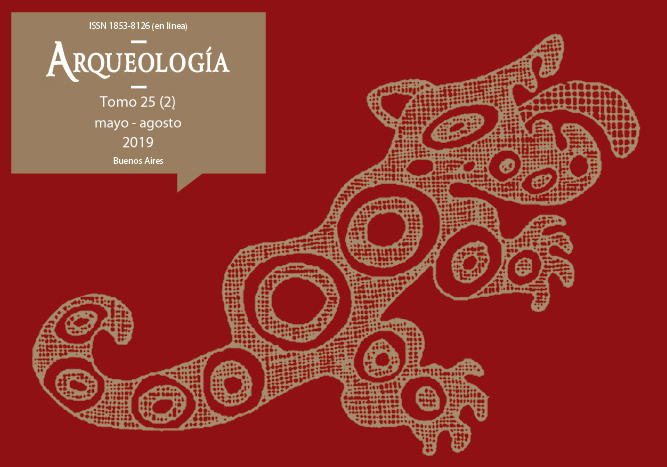New artifacts in the “New World”. The introduction of allochthonous material culture in indigenous archaeological contexts in Fuego-Patagonia during contact moments (16th – 20th centuries)
Keywords:
Technology, Cultural categories, Western artifacts, Indigenous artifacts, Patagonia, Tierra del Fuego
Abstract
This paper analyses the incorporation of European and/or Creole manufacture artefacts to the technological repertoire of Indigenous groups that inhabited Patagonia and Tierra del Fuego between the 16th and 20th centuries, as the result of contact processes with European groups in Southern South America. To this end, we analysed the published archaeological information of 19,455 artefacts found in 70 post-contact sites. We assessed the types of artefacts, whether they were recycled or not, their presence/absence from sites, and their total and relative frequencies with respect to Indigenous artefacts. We considered that resource availability, Indigenous technologies, logical frameworks and cultural categories, and mobility technologies (pedestrian, equestrian, canoes) were factors involved in their adoption. General results show that allochtonous artefacts were mostly introduced as a source of raw material to manufacture specific local morphologies, and they exhibit variations in artefact types and in their regional frequencies. This may be the result of differential availability, as well as of the presence of different cultural categories and technological practices.Downloads
Download data is not yet available.
Published
2019-06-01
How to Cite
Saletta, M. J., & Fiore, D. (2019). New artifacts in the “New World”. The introduction of allochthonous material culture in indigenous archaeological contexts in Fuego-Patagonia during contact moments (16th – 20th centuries). Arqueología, 25(2), 141-167. https://doi.org/10.34096/arqueologia.t25.n2.6865
Section
Articles
Copyright (c) 2019 María J. Saletta, Dánae Fiore

This work is licensed under a Creative Commons Attribution-NonCommercial-ShareAlike 4.0 International License.
Authors who publish in this journal agree to the following conditions:
- Authors retain copyright and yield to the journal right of first publication with the work registered with attribution license Creative Commons, which allows third parties to use the published always mentioning the authorship of the work and first publication in this magazine.
- Authors can make other independent and additional contractual arrangements for the non-exclusive distribution of the version of the article published in this issue (p. Eg., Inclusion in an institutional repository or publish it in a book), provided that clearly indicate that the work was published for the first time in this magazine.
- It allows and encourages the author / s to publish their work online (eg institutional or personal pages) before and during the process of revision and publication, as it can lead to productive exchanges and greater and more rapid dissemination of work published (See The Effect of Open Access).





(1)13.png)






1.jpg)
1.jpg)


13.png)
1.png)


(1)1.png)









